

|
There are two common types of entrances to lava tubes. Either they are formed by collapse of the cave’s ceiling, or they represent the edge of a roofed-over trench. If the collapsed entrance is relatively small in relation to the cave, roughly the diameter of the underlying passage, we tend to call it a skylight. The fourth photo shows a classic skylight as viewed from inside the tube. But perhaps the most common type of entrance is a collapse along a passage segment, which gives access to cave passage at either end. In Hawaii either of these collapse-type entrances is known as a puka. More rarely, entrances may be found in cliff faces, such as those occurring in the ongoing eruptions of Kilauea in Hawaii, where tubes carry the lava all the way to the ocean and sometimes pour out of entrances in the cliffs. Though initially formed by collapse, entrances may be modified by later lava flows, such as shown in the middle photo below. Here, a lava flow through the tube has overflowed one of the skylight entrances, depositing lava balls on the surface in the process, and has left a smooth surface where the lava rose up, before draining back into the entrance. The upper limit of the overflow is clearly visible here. Depending on the location of a lava tube and the age
of the lava, the entrance zone may form a unique ecosystem that harbors
plant life not seen on the nearby surface. Particularly in arid regions,
the tube may offer a supply of moist air that can harbor such things
as ferns and mosses. In the bottom photo, ferns are found beneath a
surface practically devoid of vegetation. Even in lush Hawaiian rain
forest, atube entrance may provide a habitat for plants not seen nearby
on the surface. |
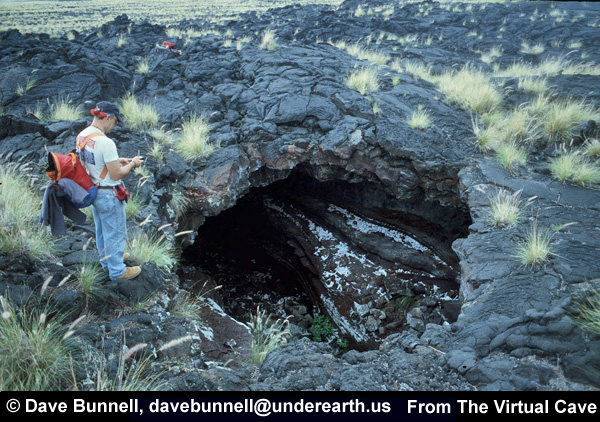 |
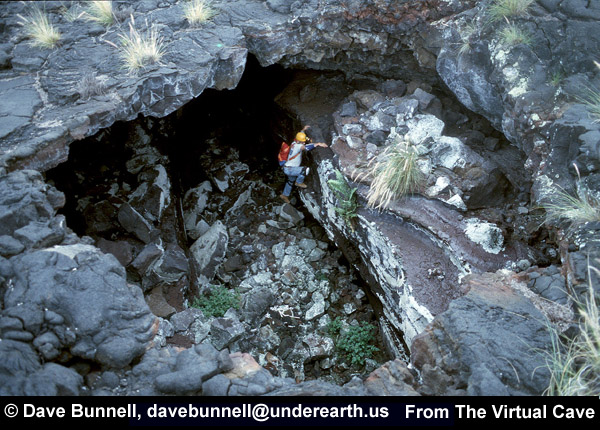 |
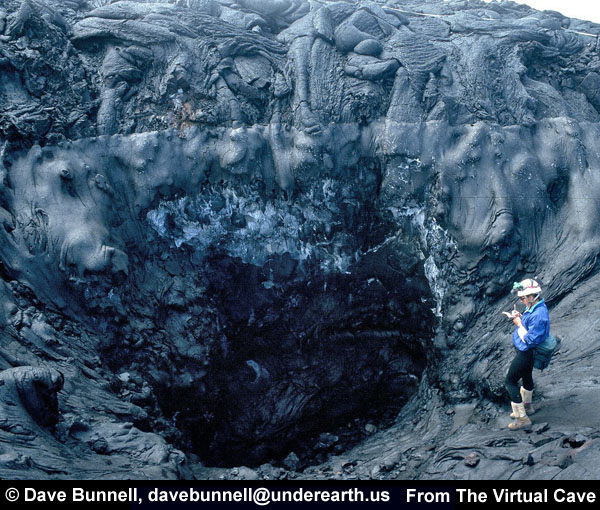 |
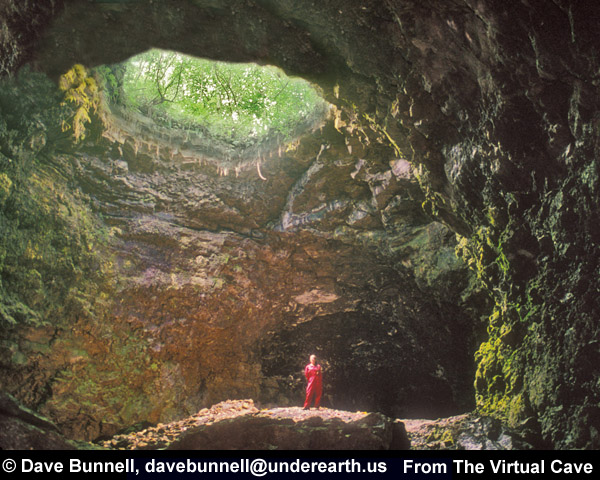 |
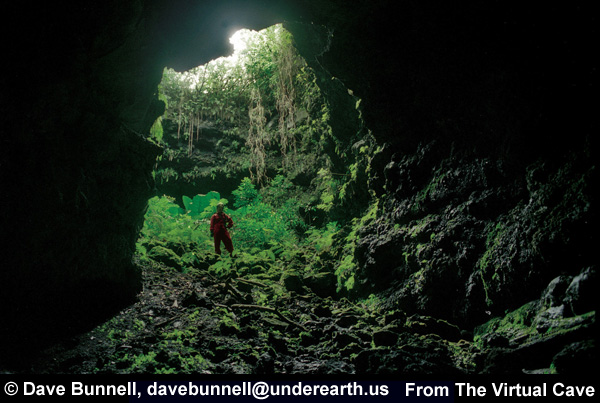 |
| Back to: | |
 |
Created: December 11,, 2008 Author: Dave Bunnell |